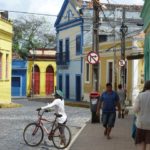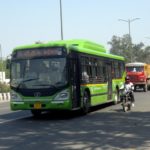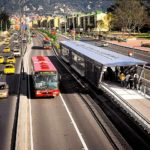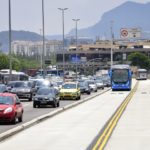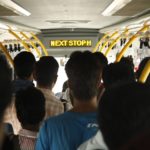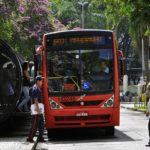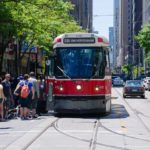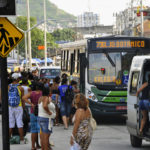Posts tagged with 'bus rapid transit (BRT)'
How do we make cities work for people? As a WRI Helms Fellow on Urban Governance and Sustainable Cities, Maria Antonia Tigre was tasked with answering this question. Through From ideas to implementation: creating sustainable cities with good governance here ...

In the mid-1980s, buses made up nearly 44 percent of all traffic in the Soviet Union, connecting the disparate republics that spanned from the Baltic Sea to the Pacific Ocean. Buses roared into small towns, seemingly in the middle of ...

In an appeal to scrap the current BRT corridor in Delhi, Saurabh Bharadwaj, former transport minister said: “The stretch on which this BRT has been made was not the best choice. For one, the bus lanes are in the middle ...

Public transport is essential for a city to function. However, cities in the Global South often encounter financial and planning challenges when developing public transport systems due to the cost and complexity of design and implementation. For example, bus rapid ...

Today marked the second and final day of the Cities & Transport International Congress in Rio de Janeiro, Brazil, where more than 1,000 participants and 130 speakers gathered to share their experiences and ideas on how to forge sustainable cities. ...

Last week, bus rapid transit (BRT) reached a global milestone, as the number of mapped BRT corridors and systems in BRTData.org’s database broke 400. As an online resource, BRTData compiles and tracks the development and progress of BRT projects globally. ...

Jaime Lerner, a three-term mayor of Curitiba, turned the city into a model for quality public transport. In the 1970s, for example, Lerner created bus priority corridors—a new transport mode that was cheaper than metro but just as effective. Jaime ...

Have you ever ridden Bus Rapid Transit (BRT)? First implemented in Brazil, this relatively new mode of transport can be found in 194 cities around the world and is proving to be an effective and viable solution for urban mobility challenges. Unlike more traditional bus ...

Women account for 48.5 percent of the general population of India, but only constitute about 31 percent of the total work force in the country. You may think that this corresponds with what you know about the status of women in ...

Nossa Cidade (“Our City”), from TheCityFix Brasil, explores critical questions for building more sustainable cities. Every month features a new theme. Leaning on the expertise of researchers and specialists in WRI’s sustainable urban mobility team in Brazil, the series will feature in ...

This article was originally published in The Economic Times. Today, Prime Minister Narendra Modi formally launches the government’s ambitious Smart Cities initiative, which aims to tackle key issues resulting from India’s rapid urbanization. In addition, the ‘Atal Mission’ and ‘Housing ...

Nossa Cidade (“Our City”), from TheCityFix Brasil, explores critical questions for building more sustainable cities. Every month features a new theme. Leaning on the expertise of researchers and specialists in WRI’s sustainable urban mobility team in Brazil, the series will feature in ...

Since its introduction over 40 years ago, Bus Rapid Transit (BRT) systems have been adopted in over 190 cities. Across the world, BRTs have brought a level of reliability, efficiency, and safety to bus networks at a fraction of the ...

While there are many inspiring examples of walkable, transit-oriented cities in Europe, there’s also plenty to learn from Canada. For example, with the extraordinary help of Jane Jacobs and other leaders, Toronto has been able to successfully keep expressways out ...

In 2012 alone, Latin America saw 131,000 preventable air pollution-related deaths. To reduce emissions and improve air quality, it’s essential that public transit fleets—like buses—become more fuel-efficient. Adopting cleaner fuels—like natural gas or low-sulfur diesel—and upgrading to technologies that produce ...

Page 5 of 22« First...456...1020...Last »






